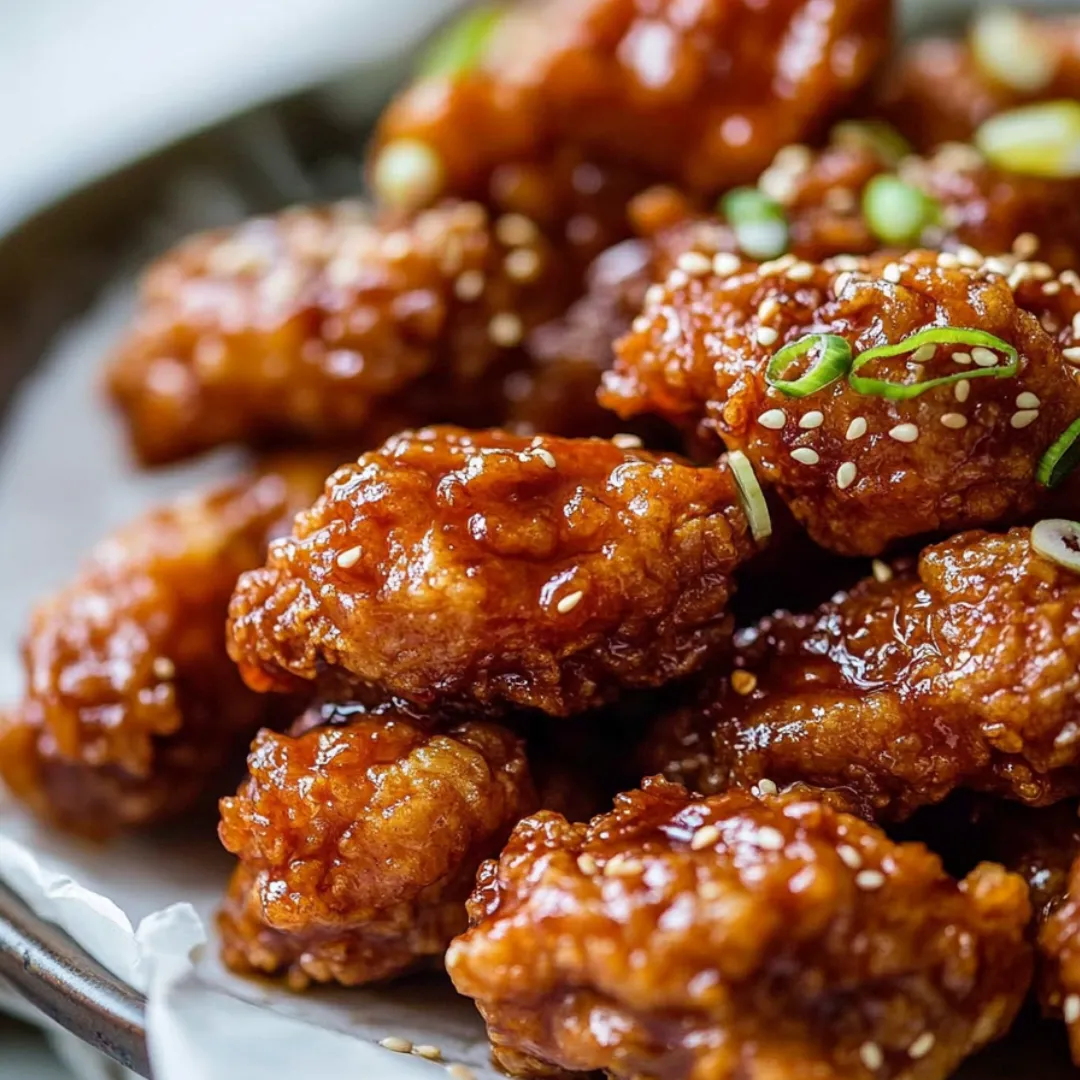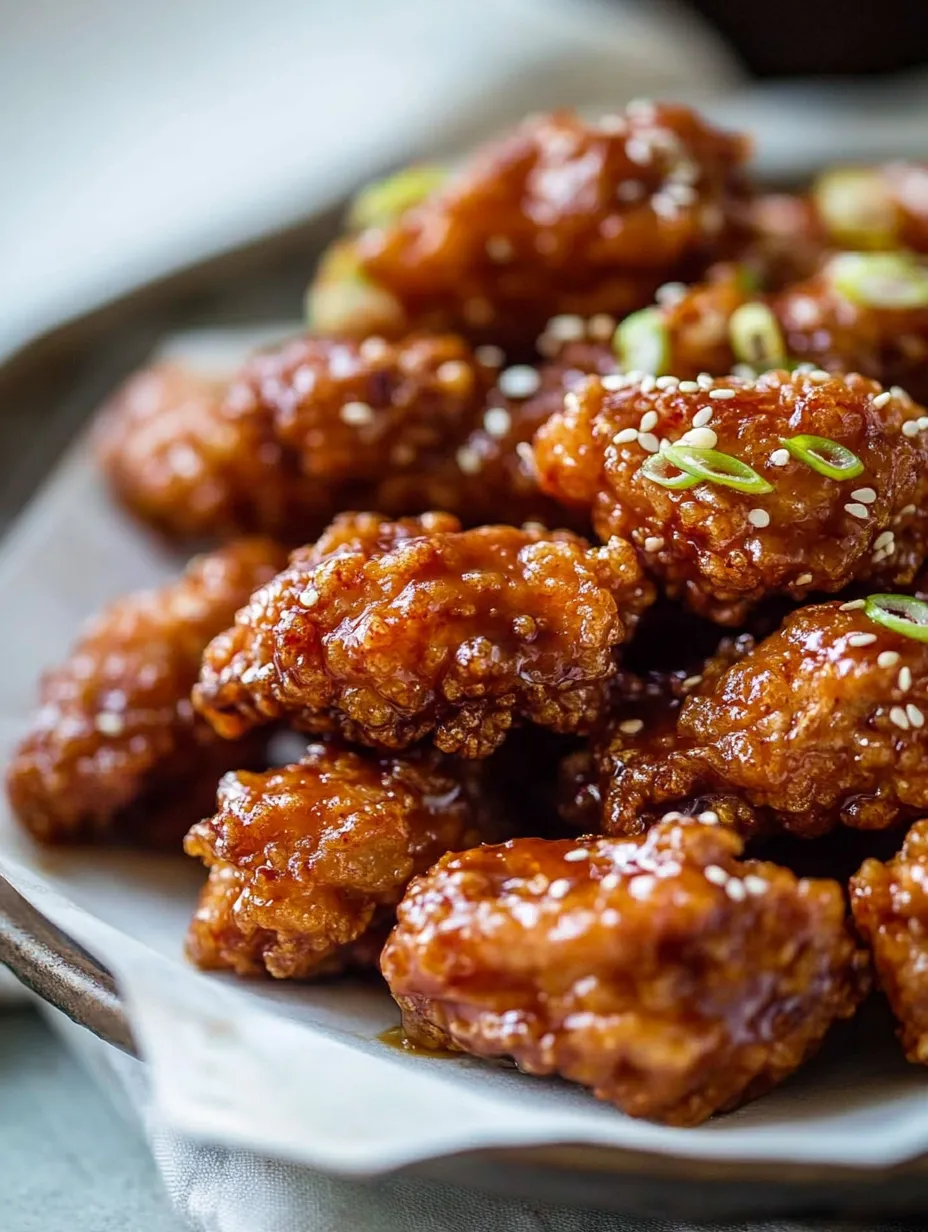 Save
Save
The very first mouthful of Dakgangjeong totally reeled me in—the chicken gets ultra crunchy, then a sweet-hot glaze sticks all over, but somehow stays snappy. It felt like a lucky find from a Korean night market, bold and exciting from the first bite. Ever since, I whip this up when I want something cozy but still a little bit wow, especially with friends dropping in last minute.
One of my Korean buddies shared this trick with me—soak the chicken in milk or maybe a splash of rice wine, and it comes out juicy as heck but still crunchy. Life-changing stuff: crispy shell, soft inside, and sticky glaze that hugs each piece without making ‘em soggy.
Irresistible Ingredients
- Milk (optional): makes everything tender without being too noticeable; swapping in rice wine gives tons of flavor and works to keep it juicy
- Sesame oil: drizzle on at the end, and it makes everything smell incredible
- Apple cider or rice vinegar: wakes the sauce right up and keeps it from getting too sugary
- Honey or rice syrup: sticky finish that brings depth—honey gets floral, syrup is glossy and thick
- Gochujang (Korean chili paste): that’s where all the heat and that bold flavor come from; want it milder? Use a different chili paste
- Potato starch or corn starch: coating each piece gives that next-level crunchy bite; potato type is crunchiest
- Boneless, skinless chicken thigh or breast: thighs are richer and tender, breasts are lighter but need careful cooking
Shopping tip: Pick out lively red gochujang at the Asian store, and double-check rice syrup labels if you’re subbing. Go for crisp ginger and tight garlic—they pack the most punch.
How To Make It
- Serving Time:
- Finish up with a sprinkle of seeds or chopped peanuts for some nutty crunch at the end
- Sauce Magic:
- Swirl together the aromatics, sugars, chile paste, and vinegar on low till it’s thick but not sticky
- First Fry:
- Heat to 330°F, cook your chicken for an initial crisp, take it out for a rest
- Get That Crunch:
- Dredge every bit thoroughly with starch so that famous crust forms—don’t skip this, or it won’t be crispy
- Marinate Next:
- Crumble ginger, garlic, pepper, and salt into the chicken and let it chill so the flavors soak in
- Double Down:
- Fry all over again, but this time hotter, till every inch turns golden and loud
- Cut And Prep:
- Slice and trim up the chicken into small chunks for super even cooking and extra crispy surface

Top Advantages
- You can get these ready really fast, perfect for groups or as snack plates
- You pick the spice—use as much (or as little) gochujang as you want without losing flavor
- Still high in protein, plus you’re not loading up on tons of breading or sugar
One time, I rushed that first fry because I was hungry. The chicken got weird and greasy and limp—so now I know: slow and steady to start, crank up the heat only after the first go. That’s how you hold onto the crunch, even with sticky sauce.
Prep Ahead Tips
Get your chicken chopped, season it, and let it marinate in the fridge the night before—it’s totally fine. You can make the sauce earlier too, just gently reheat so it stays shiny. For parties, fry it all up first, keep it warm in the oven, and only toss with sauce right before you serve so it stays super crisp.
Ways to Switch It Up
Use a bit of brown sugar and a splash of orange juice instead of honey for a sunny hit. Sprinkle fresh toasted sesame seeds if you want nuttier bites, or stir through some fresh chili for a blast of heat. Want it super gentle? Leave out the gochujang, add some extra soy and a bit of smoked paprika for warmth without the fire.
Tool Favorites
Grab a deep, narrow pan or wok to help the oil keep its heat. A candy thermometer is clutch for checking 330°F so neither fry goes sideways. A wire rack makes all the difference for letting chicken drain, so it stays crunchy and not oily.
Pro Tips
- Soaking your chicken in dairy or a bit of rice wine helps it cook up juicy without losing its crispy bite after two rounds of frying.
- Space every piece out in the pan—otherwise, the oil cools way down fast and you’ll wind up with soft, greasy chicken.
- Toss in the sauce with just enough heat to coat—if the pan’s too hot, you’ll lose crunch; too cold, and the glaze won’t stick.

Frequently Asked Cooking Questions
- → Which chicken cut’s best for this dish?
Chicken thighs or breasts without bones or skin work best since they cook fast and stay juicy.
- → Why fry the chicken twice?
Frying it two times makes the outside crunchier by drying out extra moisture and locking in crispiness.
- → Can I make the sauce less spicy?
Of course, just use less chili paste to tone down the heat or add more if you want it hotter.
- → Why soak the chicken in milk?
Soaking softens the chicken and can mellow out flavors, but you don’t have to do it if you don’t want to.
- → What starch should I use for coating the chicken?
Potato or corn starch both work great for a light, crispy fry.
- → How do I make the sauce taste best?
Cook the sauce gently until it thickens a bit to bring out the flavors before tossing it with the chicken.
